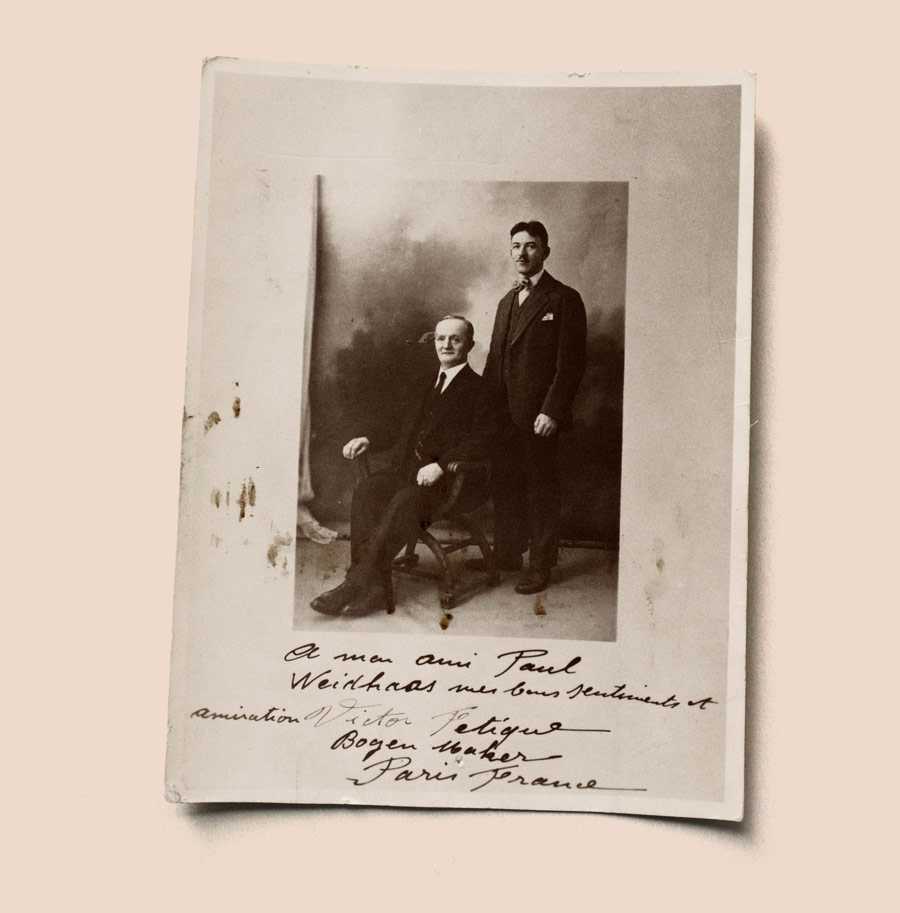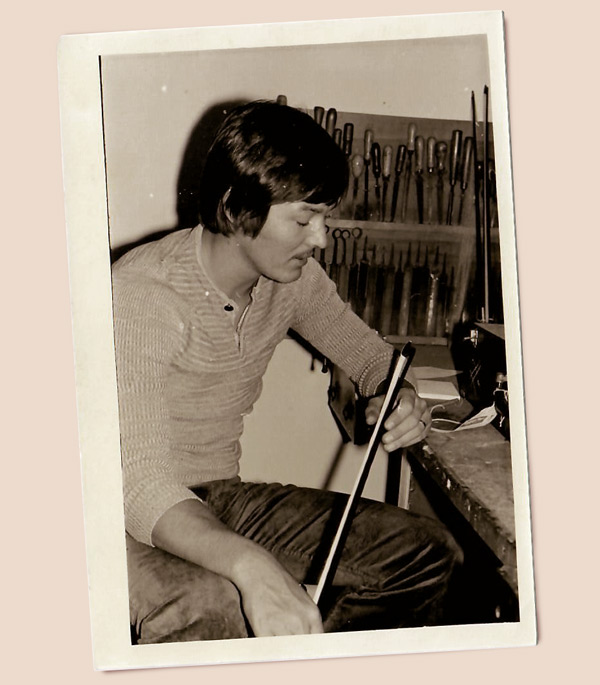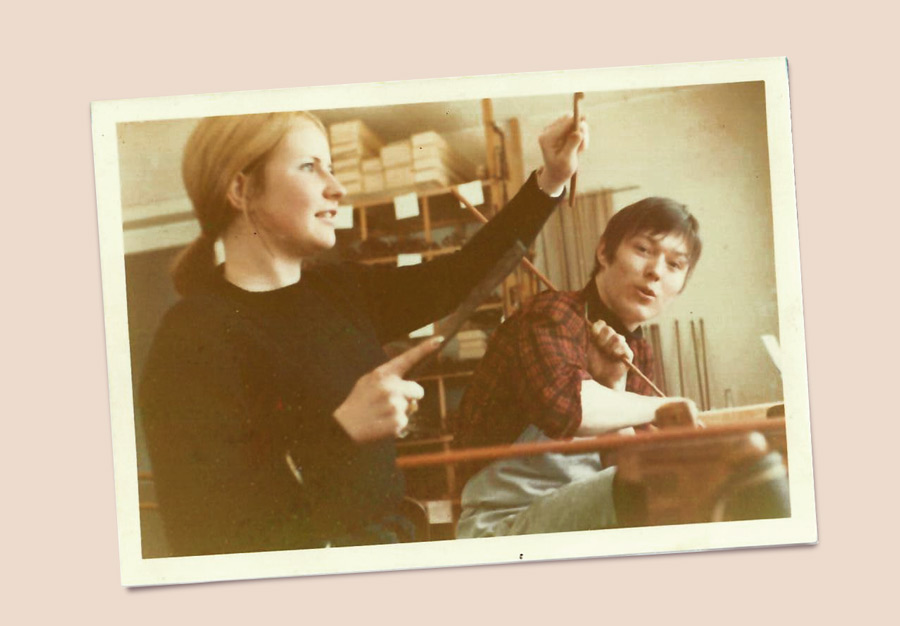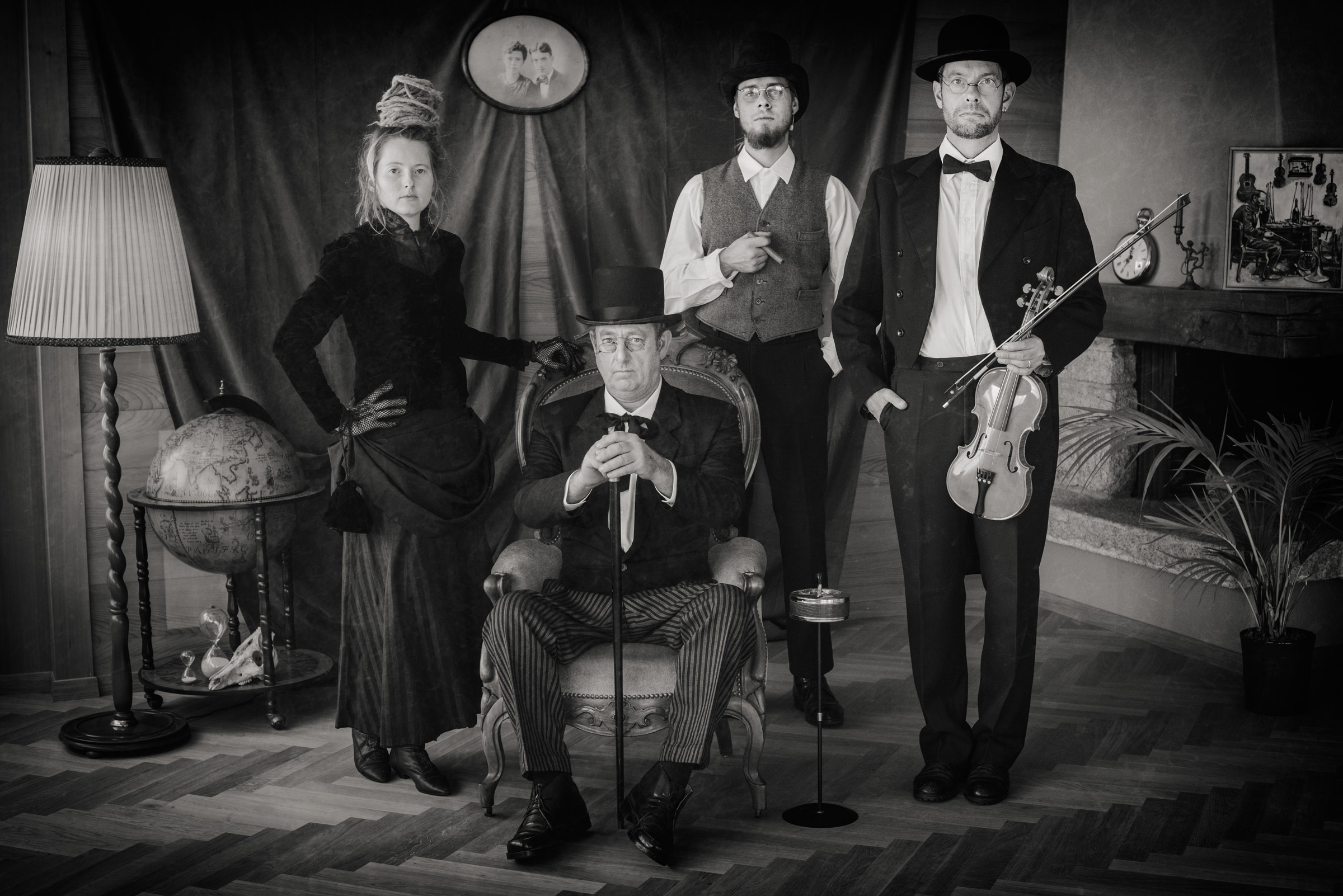
Bow making – a family affair
![]()
Bow making – a family affair
![]()
The history of Finkel bows stretches back to the 19th century and the small German town of Markneukirchen. It was there that Ewald Weidhaas (1860 – 1939) made his bows. His son Paul Weidhaas (1894 – 1962) followed in his father’s footsteps after years of travelling with stops in Paris, Leipzig and Amsterdam. Paul Weidhaas was one of the best masters of his craft in Markneukirchen – the small town in south-west Saxony had grown into a centre of instrument making since the middle of the 17th century. At first, it was Bohemian violin makers who showcased their skills, before all kinds of orchestral instruments, plucked instruments, mouth and hand harmonicas as well as bows were produced. These days, Markneukirchen with its 100+ workshops is a UNESCO immaterial cultural heritage site.

Five generations of Finkel-Weidhaas

Ewald
Weidhaas
1869-1939

Paul
Weidhaas
1894-1962

Siegfried
Finkel-Weidhaas
1927-2010

Johannes
Finkel
1947

Daniela
Finkel
1987
“Every piece of wood is different. You need to react to the wood – the machine can’t do that.”
Johannes Finkel

An old bow with ornaments by Siegfried Finkel-Weidhaas.
Paul Weidhaas was among the best masters of
his craft in
Markneukirchen.

Paul Weidhaas in his first years of travelling with bow master
Victor Fetique Paris, France.
Modern Finkel bows maintain close ties to the tradition of Saxon bow making. The family history, however, underwent a geographical change in the middle of the 20th century – the third generation of the bow-making family left Markneukirchen. Paul’s daughter Hanna Weidhaas met the young Siegfried Finkel (1927 – 2010) not long after the end of the Second World War. Siegfried Finkel started an apprenticeship as a bow maker with his father-in-law. After communism came to Markneukirchen, Siegfried and Hanna moved to Switzerland along with their son Johannes (1947) in 1952; his father-in-law had urged the young family to make this move. Their proximity to the Brienz violin-making school tipped the scales in favour of settling in the Bernese Oberland, although it required great determination and an iron will to establish a flourishing business in their new home.
Johannes Finkel learnt the craft from his father and broadened his knowledge and skills over the course of several years spent travelling, which took him to J. & A. Beare in London, to Hans Weisshaar in Los Angeles and to William Moennig & Son in Philadelphia. After returning, Johannes and Siegfried worked together in the workshop in Schwanden and continued to expand the good reputation of Finkel bows. Following the retirement of Siegfried Finkel in 1984, Johannes took over the workshop. Since then, the fifth generation has been waiting in the wings: Daniela (1987), the daughter of Marianne and Johannes Finkel, has also undergone training as a bow maker and is currently preparing to take over the business. In doing so, she is opening the latest chapter in this unique craft business in Switzerland.

Johannes Finkel during his years of travelling
at William Moennig & Son, Philadelphia, 1973.
“The secrets of a good bow lie in the quality of the wood and the finishing.”
Johannes Finkel


Marianne and Johannes Finkel
in their workshop in Schwanden, 1970.
From the workshop
Some make,
others play –
both do magic.

The bow makers: Daniela Finkel, Menk Lüthi, Daniel Ernst, Markus Fischer
A good bow maker is not necessarily someone who can play the violin well. The employees at the Finkel workshop admittedly have a flair for music; some play or have played the violin themselves, others cast their hands down in puzzlement at the sight of a violin and others are musically adept at drums, guitar or alphorn. The eye, manual expertise, feeling and experience are much more important in the workshop, however. The bow makers bear music on their hands, so to speak. It is through their craft that the bows are given the strength and elasticity that make for a good sound. Collaboration within the team also plays an important role, since not every problem can be solved right away; ideas and mutual tips are called for.
Even though the tradition has been upheld for many years and each bow maker has developed their very own personal signature over time, there are always new things emerging and the craftspeople are constantly pushing each other further. Each bow is given the finishing touches by workshop manager Markus Fischer – it is this sum of different forces that makes up the perfection of Finkel bows and, combined with the expertise of the musicians, is what is reflected in the perfect sound. Some make, others play – both do magic.
Violin

No.180GEM
D.S.Finkel
Viola

No.460GEM
M.Fischer
Cello

No.380GEM
D.S.Finkel
![]()